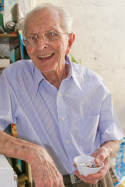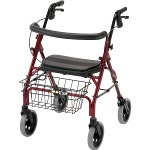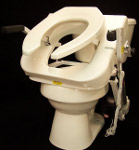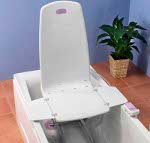Improving Activities of Daily Life For Seniors
Published by Steve Hedberg on January 18, 2010 Under home medical
 Seniors, specifically those over 65, are at an increased risk for a number of disease, which often have an affect on their ability to complete Activities of Daily Life(ADL.) Some of the common ADL are bathing, going to the toilet, freely moving around, both indoors and outdoors, as well as feeding oneself.
Seniors, specifically those over 65, are at an increased risk for a number of disease, which often have an affect on their ability to complete Activities of Daily Life(ADL.) Some of the common ADL are bathing, going to the toilet, freely moving around, both indoors and outdoors, as well as feeding oneself.
Since it is very common for these Activities of Daily Life to become more difficult for the elderly, there are a number of types of home medical equipment designed to make these tasks easier.
Improving Mobility
 One of the most common problems faced by seniors is a reduction of mobility, often caused by arthritis. This reduction of mobility can make it much more difficult to move around the house and when away from home. To address this problem, one of the most common types of home medical equipment is the rolling walker, or rollator.
One of the most common problems faced by seniors is a reduction of mobility, often caused by arthritis. This reduction of mobility can make it much more difficult to move around the house and when away from home. To address this problem, one of the most common types of home medical equipment is the rolling walker, or rollator.
A Rollator offers support for a senior as they walk. The rollator is placed in front of the senior and provides two handles, which provides improved stability than a cane would, as a cane can only be used in one hand. Since there are wheels on the rollator, it can be pushed in front of the senior and does not need to be picked up and repositioned with each step, as a traditional walker needed to.
For seniors who are unable to walk for extended periods of time, even with the support of a rollator, another option is the mobility scooter, which is an electric powered mobility vehicle, designed to carry a senior both indoors and out. Mobility scooters are much more expensive than a rollator, though, but allow for the senior to drive across both indoor and outdoor terrain, with little physical effort.
Of course, when purchasing a mobility scooter, one must also consider how the scooter will be transported. Where a rollator can be folded up and easily placed in a car or other automobile, it is often necessary to install a scooter lift on the vehicle. However, some mobility scooters are designed to be easily taken apart, so that a scooter lift is not needed. These are called travel scooters and while very easy to transport, lack many features and are not as sturdy as other mobility scooters.
Lift chairs are another popular tool to improve mobility, providing a comfortable place to sit, while at the same time, making it easier to stand. This is because there is a lifting system in the base of the lift chair, which is used to raise the occupant to a standing position.
Improving Bathing and Toiletry
 Often, bathing and using the toilet are very difficult for the elderly and are one of the more common activities of daily living that presents risks to the elderly. To help make using the bathroom easier, a toilet seat lift is often used. Toilet seat lifts are installed over an existing toilet and provide a mechanical lifting system that helps raise the senior off of the toilet. In addition to a motorized lifting seat, there are usually arm rests positioned on both sides of the toilet seat lift, providing extra stability while the senior uses the toilet.
Often, bathing and using the toilet are very difficult for the elderly and are one of the more common activities of daily living that presents risks to the elderly. To help make using the bathroom easier, a toilet seat lift is often used. Toilet seat lifts are installed over an existing toilet and provide a mechanical lifting system that helps raise the senior off of the toilet. In addition to a motorized lifting seat, there are usually arm rests positioned on both sides of the toilet seat lift, providing extra stability while the senior uses the toilet.
 For the bathtub, a bath lift is one of the more common mobility aids, which helps raise and lower the senior into and out of the bathtub. Most provide an electrical lifting system, which raises a plastic chair that is placed inside the bathtub and secured using suction cups.
For the bathtub, a bath lift is one of the more common mobility aids, which helps raise and lower the senior into and out of the bathtub. Most provide an electrical lifting system, which raises a plastic chair that is placed inside the bathtub and secured using suction cups.
However, inflatable bath lifts are also popular, which use an air pump to fill a air filled seat. One of the main advantages of an inflatable bath lift is that it is great for traveling, but it does cost more than the traditional plastic chair bath lift.
The Importance of Activities of Daily Living
Being able to independently and safely complete activities of daily living is important not only for physical reasons, but also mental ones. Studies have found that seniors who are better able to preform ADL typically have a lower rate of cognitive impairment.
Using Home Medical Equipment should not be the only steps take to improve ADL, but they can be a powerful asset to improving the safety and health of the elderly.
No Comments |